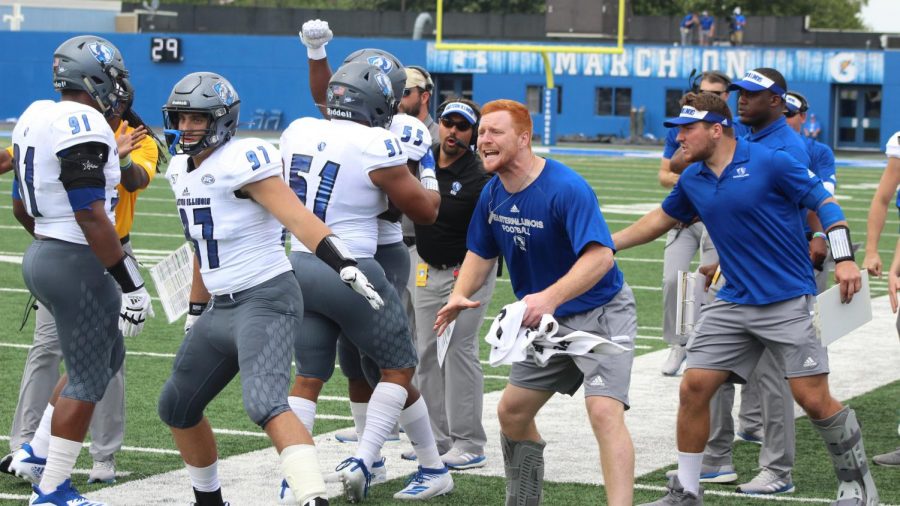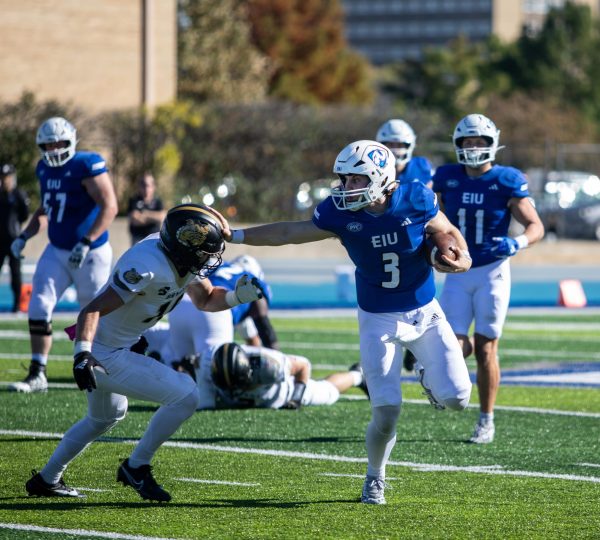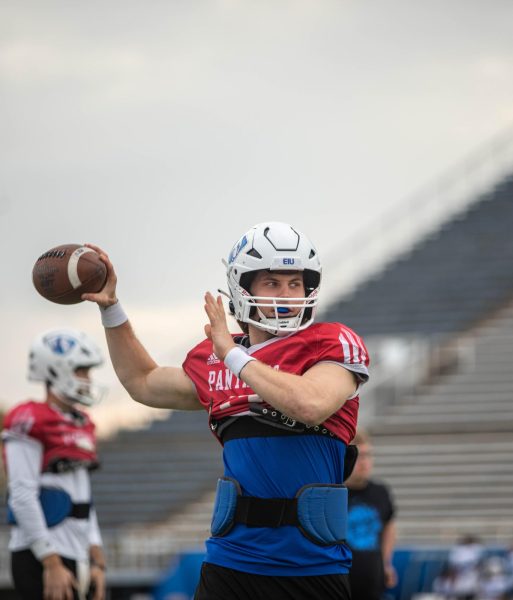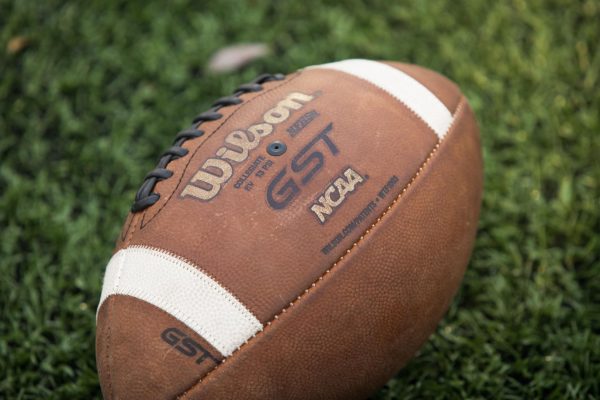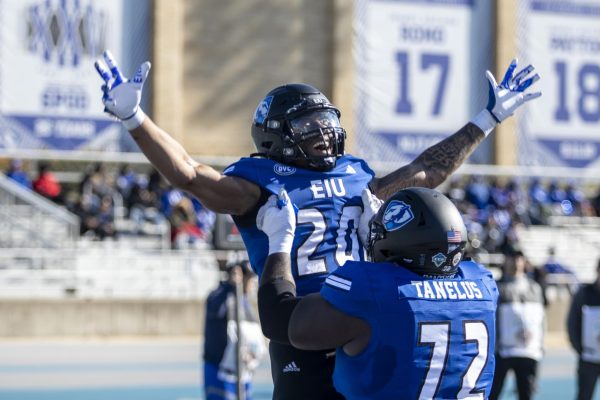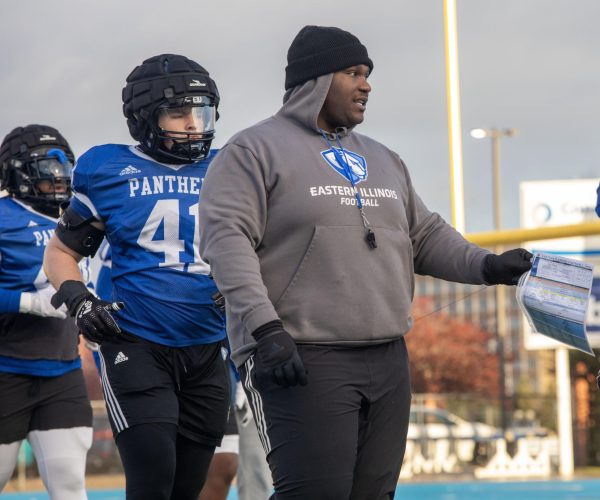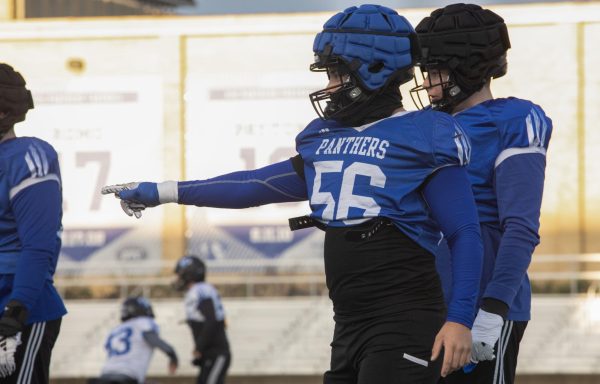Column: Eastern’s offense needs to utilize more smaller, shorter routes
September 21, 2019
TERRE HAUTE, Ind.- Eastern’s offense and Indiana State’s offense both ran, literally, into the same problem in Eastern’s 16-6 loss to the Sycamores Saturday.
The difference was that the Sycamores found ways to get around Eastern’s defense, while Eastern’s offense was stuck and could do hardly anything.
Both teams figured out how to stop each other’s run game early on.
Indiana State, right after the opening kickoff, was able to hold Eastern to little-to-no gains on rushing plays.
Eastern only gained 42 yards on the ground in the first half.
Eastern had more of a difficult time figuring out the Sycamores’ run game, though, as they used a lot of read-option plays and were able to break out a couple big runs.
Indiana State’s first drive led to a field goal and its second drive ended with no points, but a lot of yardage gained.
In both drives, rushing plays were the weapon of choice.
After that, Eastern started to clog up previous running lanes up the middle and did an OK job stopping runs outside the blockers.
But Eastern’s offense, with its known struggles of not getting many yards offensively this season, was stuck throughout the first half.
Quarterback Johnathan Brantley scrambled away from pressure a lot so far this season, and Saturday was no different.
But Indiana State stopped his option runs and plugged up any possible holes for Eastern’s running backs.
Eastern’s offensive play calling did not vary too much, so Indiana State’s linemen ate up any Eastern rushing attempt with ease.
What Eastern could have turned to were quick, short routes to start breaking the defensive pressure and rack up yards in small steps, something the Panthers should have done earlier this season too.
“We’re always just looking to take what the defense is giving us,” said head coach Adam Cushing. “I think it’s just back to the drawing board, and it starts with us as coaches.”
Indiana State did it and found success with the strategy after Eastern’s run defense improved.
The Sycamores started using more screens, as well as some quick, short slant routes across the middle and square-in/out routes.
For instance, Indiana State’s lone first-half touchdown came off a third-and-long screen pass that was taken 69 yards for the score.
Even Indiana State’s last possession of the first half, which led to its second field goal and its 13-0 halftime lead, benefitted from some 5-to-7 yard passes to gain some chunks of yardage after runs were stopped by Eastern.
Later in the second quarter, Harry Woodbery started taking snaps under center and instantly threw some short passes that succeeded in getting small gains.
The times Eastern did attempt a short, quick pass worked, but those plays only happened a select few times.
One time it worked: With 8:30 left in the second quarter, on third and 10 on Eastern’s own 42-yard line, Woodbery threw to Robbie Lofton II, who ran a quick slant route over the middle.
Eastern was stopped just short of the first down, but converted on fourth and one. Regardless, that route on the play helped Eastern gain some field position and showed what that type of route could do to help.
“I think we came in with a great game plan, it’s just about getting our rhythm,” Woodbery said. “I think we did a great job at halftime of changing some things up and getting in to some better plays.”
In the third and fourth quarter, when Eastern finally scored a touchdown and started driving the ball more, some of those shorter passes were helpful in getting first downs and yardage down the field.
A couple other times, when Woodbery or Brantley attempted a deep pass that fell incomplete (or was intercepted), an Eastern receiver was open over the middle on a short drag route that presented a better option.
One such time was with 12 minutes left in the fourth quarter, when Eastern looked like it was going to drive down the field and tie the game at 13 all.
Eastern trailed 13-6 and had the ball at its own 43-yard line. It was second and 22 after an Eastern blocking penalty, and Woodbery aired out a pass into triple coverage that was predictably intercepted.
In Woodbery’s defense, it did not look like there was an open receiver, much less any available receivers, on a short route.
But in a situation as such, going for a brash deep pass is not the best idea and having a receiver available on a smaller route could be the insurance for coverage downfield.
Any amount of yards helps, especially when deeper passes and runs are not working, so these small routes are a big help in times of need.
Part of the issue for Eastern is that the offensive line is not up-to-par, so passing is not a viable option in most cases.
Another part of the problem is that Eastern’s receivers, in Saturday’s game, did not do a good job at times of getting open and creating separation from coverage on deep routes.
That is where quick passes on short routes, even some good screen plays (emphasis on good), would help the Eastern quarterbacks get confidence by completing a chain of passes.
These routes also take away pressure from the quarterbacks, so they can release the ball quickly and not have to worry about the incoming lineman pileup headed their way.
Eastern’s offense, currently, is predictable and not producing points.
By throwing in some short slant routes across the middle, or drag routes, or by mixing in more curl routes or in and out routes to eat up short yardage gains, the Panthers’ offense will find itself gradually making more progress.
It would also keep opposing defenses on their toes to where they cannot just expect option plays and runs and deep passes.
More variation will make the offense unpredictable and create more chances for the deeper passing game to open up.
Right now, what the Eastern offense is doing is not working and conference play is next on the schedule, so by implementing these changes now, rather than later, the Panthers may be able to salvage something out of an 0-4 start.
Dillan Schorfheide can be reached at 581-2812 or [email protected].






































